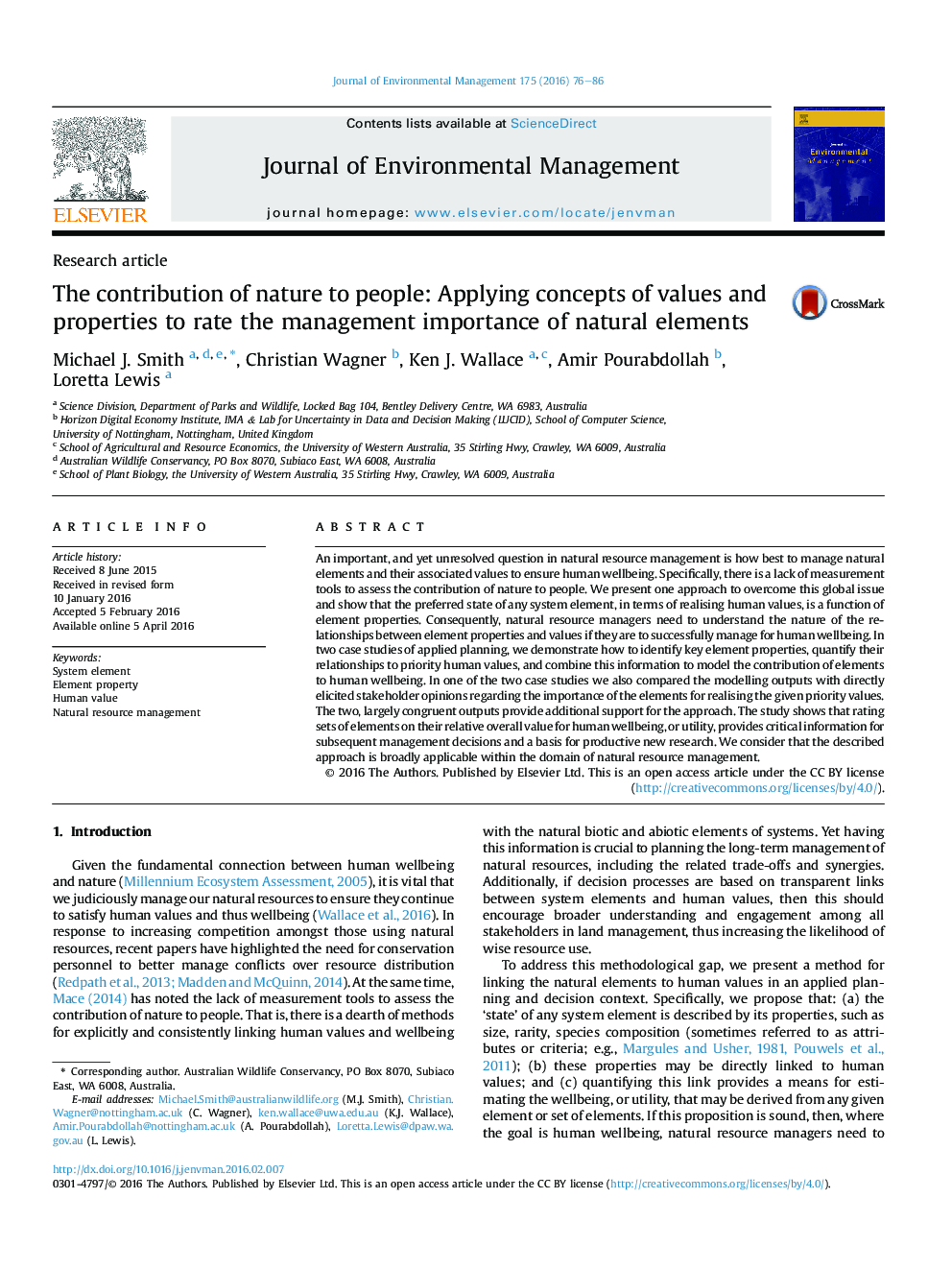| Article ID | Journal | Published Year | Pages | File Type |
|---|---|---|---|---|
| 7480519 | Journal of Environmental Management | 2016 | 11 Pages |
Abstract
An important, and yet unresolved question in natural resource management is how best to manage natural elements and their associated values to ensure human wellbeing. Specifically, there is a lack of measurement tools to assess the contribution of nature to people. We present one approach to overcome this global issue and show that the preferred state of any system element, in terms of realising human values, is a function of element properties. Consequently, natural resource managers need to understand the nature of the relationships between element properties and values if they are to successfully manage for human wellbeing. In two case studies of applied planning, we demonstrate how to identify key element properties, quantify their relationships to priority human values, and combine this information to model the contribution of elements to human wellbeing. In one of the two case studies we also compared the modelling outputs with directly elicited stakeholder opinions regarding the importance of the elements for realising the given priority values. The two, largely congruent outputs provide additional support for the approach. The study shows that rating sets of elements on their relative overall value for human wellbeing, or utility, provides critical information for subsequent management decisions and a basis for productive new research. We consider that the described approach is broadly applicable within the domain of natural resource management.
Keywords
Related Topics
Physical Sciences and Engineering
Energy
Renewable Energy, Sustainability and the Environment
Authors
Michael J. Smith, Christian Wagner, Ken J. Wallace, Amir Pourabdollah, Loretta Lewis,
